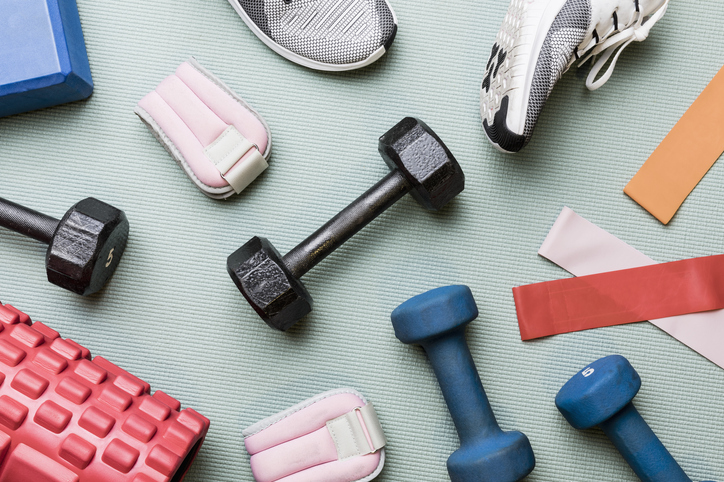
If You Haven't Already, Make Exercise a Habit. Right Now!
By Joy Stephenson-Laws, J.D., Founder
It’s never too late to be physically active.
Just take a look at the story of a 63-year-old grandmother named Lesley Maxwell. Maxwell became a personal trainer at the age of 48 and won her first fitness competition at 49. And if you take a look at her, you can see that abs and chiseled arms are possible to have in your 60s. She even dates men decades younger than her!
“All I'd say is — don't wait! I think every woman would like to bring their sexy back,” Maxwell said.
For me, this isn’t about how she looks or that fact that she is able to pull off dating much younger men. I think what’s important to take away from this is that she said to not wait to embrace fitness. The sooner you start the better, and the sooner you make working out a habit the better.
Credible research seems to support her lifestyle too. One recent study found an association between long-term training and metabolic disease prevention. The theory is that long-term exercise may alter muscular gene activity in a way that could help prevent the development of metabolic health issues such as diabetes and heart disease (conditions that millions of Americans suffer from).
"Although short bouts of exercise have been shown to influence the gene activity in our muscles, it is the dedication to habitual exercise over a lifetime that is associated with long-term health benefits," said one of the lead authors of the study, according to one report discussing the study.
"Thus, understanding how our muscles are changing over many years of training is critical to determining a link between exercise and health."

If you are young, start exercising regularly now (if you are not already) and make it a habit. If you are older, it is still not too late to reap some of the benefits of habitual exercise.
The study examined people (both men and women) who had been practicing intensive exercise training for at least the past 15 years. Some of the participants had been doing endurance training (running or cycling) while some had been doing strength training (such as weightlifting). Age-matched, untrained but healthy (so no metabolic disease) controls were also included in the study for comparison.
The researchers collected skeletal muscle biopsies from all of the participants. They conducted RNA sequencing so that they could measure the activity of more than 20,000 genes.
Long-term endurance training (running and cycling) appeared to change the activity of more than 1,000 genes in both men and women (compared to the controls).
“Many of the altered genes were related to an increased activity in numerous metabolic pathways related to the prevention of metabolic diseases, such as type 2 diabetes.”
What about strength training?There was not as much of a significant change in gene activity. The researchers only saw 26 genes that changed with long-term weightlifting. But before you put the dumbbell down, “...this does not mean gene activity is unaffected with weightlifting, it could be that changes in muscle gene activity with weightlifting are related to proteins instead of RNA.”
You really want to practice getting in the habit of doing both aerobic and strength training. They are both very important. Weightlifting also helps delay age-related muscle loss, sarcopenia.
You don't have to be an endurance athlete.
“The researchers also cross-referenced their data with studies examining muscle gene expression before and after a months-long training period in individuals with type 2 diabetes,” according to the study report.
“The results show that following short exercise programs, individuals with impaired metabolism shifted their gene activity to become more similar to the long-term endurance-trained groups compared with before they started training.”
This is encouraging, because it, once again, shows that it is never too late to improve your health with some exercise. Find activities that you enjoy, and, again, make it a habit!
You can even incorporate cycling, jump rope and hula-hooping into your exercises to make it fun.
Fuel your body.
Physical activity is great for both your body and mind, but remember that you need the proper intake of nutrients to perform well and recover afterwards. Read here to learn more about how to properly fuel your body for physical fitness.
And read here for three nutrients women may specifically need when they exercise. Click here to get an idea of how much exercise may be appropriate for you according to your age.
Finally, it is very important to take routine nutrient tests in order to identify if you have any nutrient imbalances or deficiencies. If you do, a competent healthcare professional can work with you on making the necessary dietary changes and recommend quality supplements if necessary.
Get moving and enjoy your healthy life!
The pH professional health care team includes recognized experts from a variety of health care and related disciplines, including physicians, attorneys, nutritionists, nurses and certified fitness instructors. This team also includes the members of the pH Medical Advisory Board, which constantly monitors all pH programs, products and services. To learn more about the pH Medical Advisory Board, click here.







